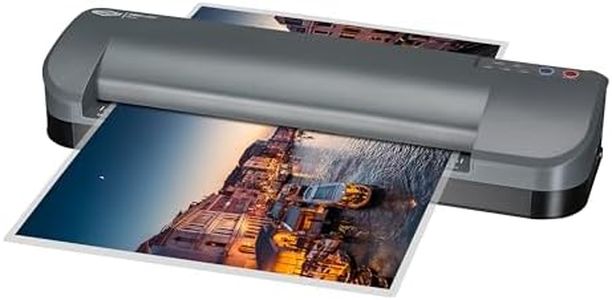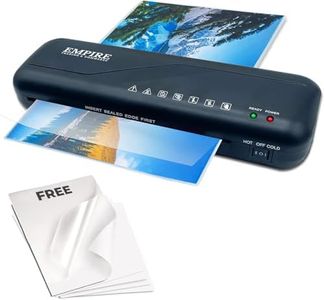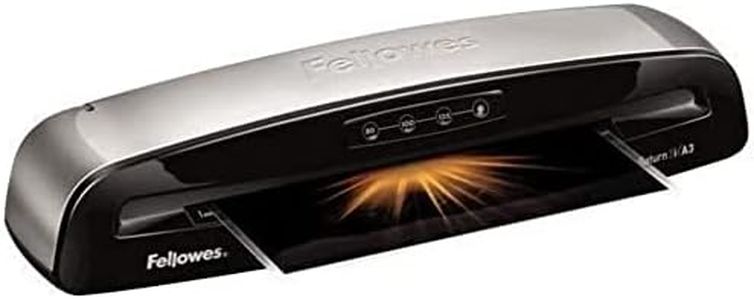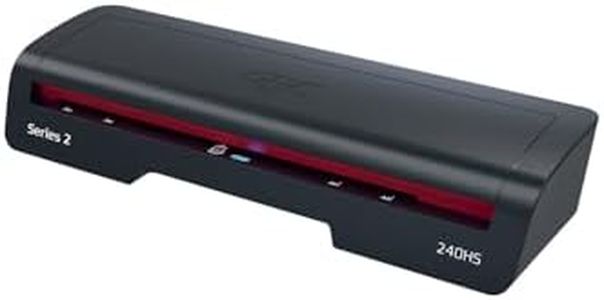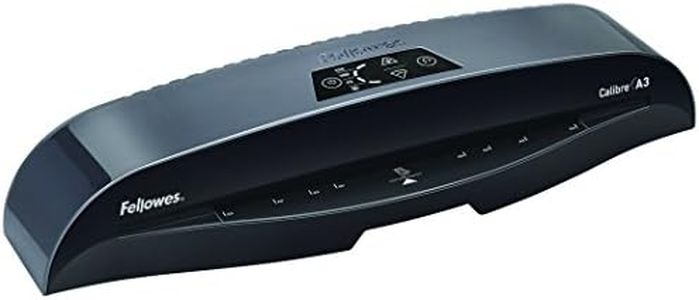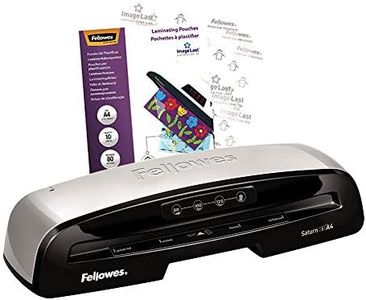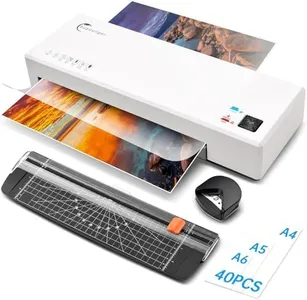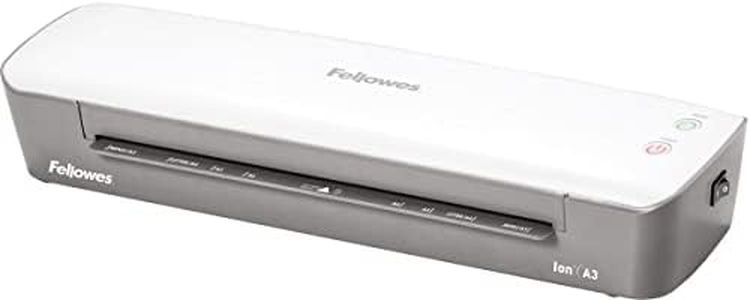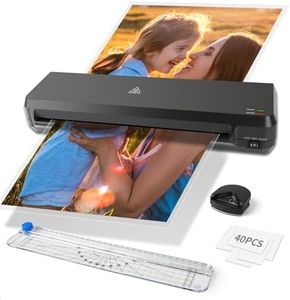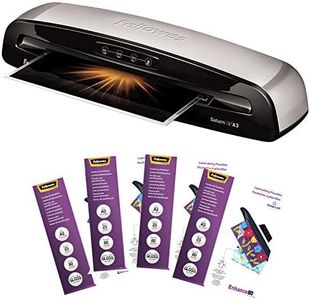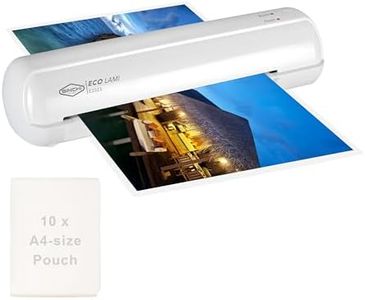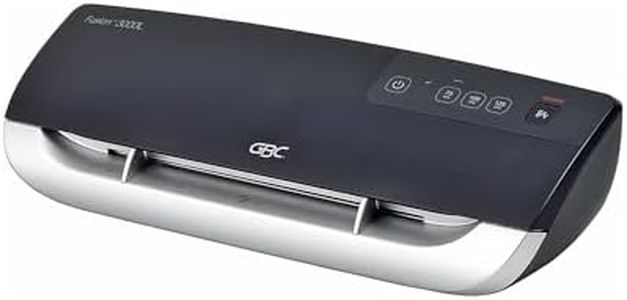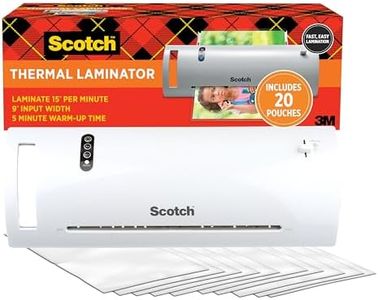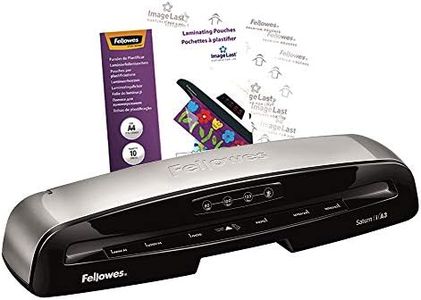We Use CookiesWe use cookies to enhance the security, performance,
functionality and for analytical and promotional activities. By continuing to browse this site you
are agreeing to our privacy policy
10 Best Laminators
From leading brands and best sellers available on the web.By clicking on a link to a third party's website, log data is shared with that third party.
Buying Guide for the Best Laminators
Choosing a laminator is all about matching the machine's capabilities to your intended use. Laminators can help you protect documents, create durable signs, or make creative projects last longer. Before choosing, think about what items you plan to laminate most often, their sizes, and how frequently you'll use the laminator. Understanding some main features will help you pick a machine that handles your needs efficiently and with the best results.Laminating WidthLaminating width refers to the maximum width of material that the machine can handle. This is important because it determines what size documents or items you can laminate. Smaller machines often handle up to standard letter size (about 9 inches), which is perfect for everyday documents and photos. Mid-sized machines accommodate legal-size papers (up to about 12 inches), and larger ones can handle posters or presentation materials (even wider than 12 inches). To pick the right one for you, consider the largest item you expect to laminate. It’s usually best to get a laminator just slightly wider than your most common project to allow for flexibility but avoid paying for more size than needed if you only do small tasks.
Laminating SpeedLaminating speed indicates how quickly the machine can process and seal your documents, usually measured in inches or millimeters per minute. Speed matters most if you plan to laminate many items in one session or need to finish tasks quickly. Basic home laminators generally move more slowly, making them suitable for occasional use. More advanced models work faster, ideal for schools or small offices. If you anticipate high volume, higher speed can save time. For casual users with only a few items, a lower speed is usually fine.
Pouch Thickness CompatibilityPouch thickness, measured in microns or mils, tells you the maximum thickness of laminating pouches the machine can handle. Thicker pouches provide more protection but require a more powerful heater. Laminators typically work within a range (like 3 mil to 10 mil). For everyday documents, thinner pouches (3-5 mil) are usually sufficient and keep items flexible. For signs, reusable items, or heavy-duty protection, thicker pouches (7-10 mil) are preferred. Choose a laminator that supports the pouch thickness suited to your tasks—if you want versatility, pick one with a wide pouch thickness compatibility.
Warm-Up TimeWarm-up time is how long the laminator takes to get ready for use after being turned on. This is important for convenience, especially if you need to laminate something quickly. Basic units might take several minutes to heat up, while more efficient models can be ready in one to two minutes. If you laminate often or in a hurry, shorter warm-up times are helpful. For occasional use, a longer wait isn’t usually a problem.
Jam Prevention and Release FeaturesJam prevention and release features help avoid or resolve situations where your document or pouch gets stuck inside the laminator. Some machines have simple release levers, reverse functions, or anti-jam technology to reduce the risk of jams. These features are valuable because they prevent wasted supplies and frustration. If you’re new to laminating or anticipate frequent use, jam-solving features can make the process smoother and more beginner-friendly.
Temperature ControlTemperature control lets you adjust the heat settings, which is important for handling different pouch thicknesses or lamination types such as hot and cold lamination. Fixed temperature units are straightforward but may not suit all pouch types. Adjustable ones provide more flexibility for different projects. If you plan on laminating a variety of items or materials (such as heat-sensitive documents), adjustable temperature is useful; simple settings are fine for single purposes.
Hot and Cold Lamination OptionsSome laminators can do both hot and cold laminating. Hot lamination uses heat to seal pouches and is great for most papers and photos. Cold lamination works with pressure and is suitable for delicate or heat-sensitive items. Choose a laminator with both options if you want versatility, especially for crafts or heat-sensitive materials, but if you only laminate standard documents, hot lamination alone may be all you need.
